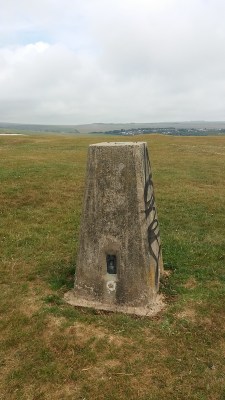A Legacy of Spies (published 2017) is both a prequel and sequel to Le Carre’s most celebrated novel, A Spy Who Came in From the Cold (1963). Peter Guillam is retired in Brittany, when he is summoned to London to resolve “a matter in which you appear to have played a significant roles some years back“. Legal claims have emerged relating to the 1960s mission described in Le Carre’s earlier book.
Le Carre is at his best writing interrogations, and the scenes where Guillam faces British Government lawyers are great. I particularly liked the character of Tabitha, a service-appointed lawyer representing Guilliam. He cannot decide whether to trust her or not, and it demonstrates the Kafka-esque nature of trials where details are restricted to lawyers and defendants.
The problem is, in discussing an event set in the early sixties, Le Carre resorts to having Guillam read through old memos and transcripts. This mean the action felt very distant, and it was a little like being at work. The quality of the encounters between Guillam and the lawyers only make this technique feel more threadbare. Despite that, the writing is often brilliant, with some striking phrases, such as when Guillam muses, “Sometimes I wonder whether it is possible to be born secret, in the way people are born rich, or tall, or musical“.
Ultimately, Guillam has to decide what to do with secrets that have been kept for decades. Bunny, one of the government lawyers, refers disdainfully to “the British public’s insatiable interest in historic crime… Today’s blameless generation versus your guilty one“. The legacy of cynical and shameful acts needs to be reckoned with, and potentially punished long after the fact.
The structure of the book promises an encounter with spymaster George Smiley. We see him in the old transcripts first, “tubby, bespectacled, permanently worried“. There’s a lovely description of Smiley carrying out an interrogation: “a bit put out, a bit pained, as if life is one long discomfort for him and no one can make it tolerable except just possibly you“.
In the final section of the book, Guillam sets out to find Smiley. There is a brief rousing chorus of Smiley’s People before this final reckoning. Smiley seems younger than he should be and, indeed, his age has been retconned in a couple of earlier books. He has become one of those de-aging spies, like Nick Fury, his past rewritten to catch up with him. This final encounter is brief and perhaps inconclusive, as was the novel itself. Smiley cannot but be seen as a cipher of Le Carre himself, a mysterious presence in the background of all these books.
I think Le Carre is one of Britain’s most impressive living writers. This book feels very much a valedictory one, and last year’s Agent Running in the Field came as a surprise. The more recent book is probably the better one, since this book feels limited by being a legacy project but it mostly works well.
“We do feel it’s an important job, as long as one cares about the end, and not too much about the means“.













